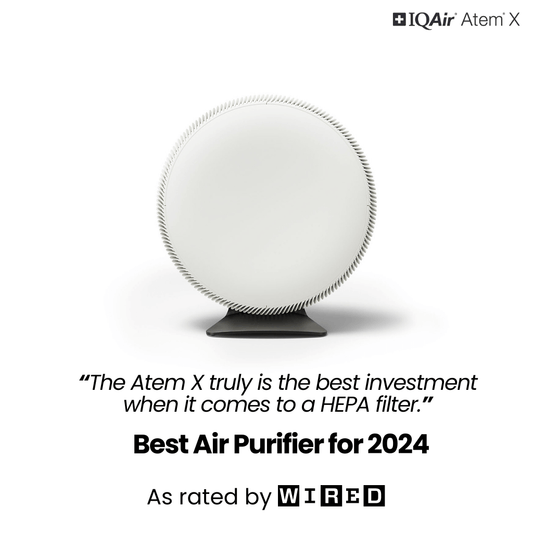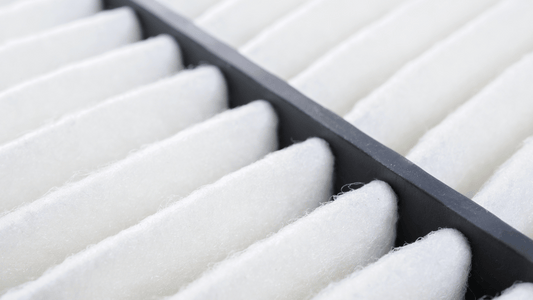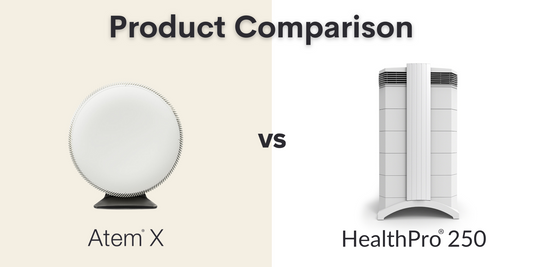In this AirFree air purifier review, we discuss Airfree P60, which is one of six P model air cleaners that Airfree offers. The AirFree P60 retails at around £179.00. It can be bought at online retailers, such as Living Pure, Air Concern, and Amazon. Unlike most air purifiers, the Airfree P60 does not have a filter or a fan. Instead, it incinerates pollution in the air that passes through it by heating it up to 200ºC.
Pros:
- Small and mobile
- Aesthetically pleasing design
- Completely silent
- No filter replacement
Cons:
- X Low air flow
- X Ineffective filtration
Marketed as and history:
The company Airfree was founded in 2004 and is based in Portugal, where it also manufactures its range of air purifiers. Airfree air purifiers are being sold in Europe, the Americas, Asia, and the Middle East. The Airfree P60 is 1.09 kgs in weight, making it very mobile and easy to lift onto desks and tables if preferred. This is coupled by its size, which is 21.5 cm in diameter and 26.5 cm high. The Airfree P60 air cleaner comes with what the manufacturer calls a built-in “exclusive anti-stress light”. The idea here is that the blue light helps the user to relax while breathing the air that has been cleaned by the Airfree unit. Airfree markets the P60 air cleaner as “the natural solution to asthma, respiratory allergies, and mould” and says that it “eliminates” airborne mould, bacteria, viruses, dust mites and pollen allergens. Airfree says that this is done through the “natural” purification method that the Airfree air purifiers use - a technology the manufacturer calls a ‘Thermodynamic Sterilising System (TSS)’, which uses convection to draw the air into the unit where it is exposed to a temperature of 200c.
Based on how the unit is advertised on Airfree’s and their retailer’s website, the P60 air cleaner is meant for those suffering from allergies. Airfree states that the unit is “the natural solution for asthma” and that it is designed for small to average room sizes of up to 24m2.
Review:
When opening the Airfree air purifier box, you see a notice that states that for the first five days the Airfree air cleaner should only be used in a “well-ventilated area”. With most electrical products there is a period of time when the product produces a smell, and air purifiers are unfortunately not an exception to that.
Image One: the “Attention” notice is clearly visible. Once we turned the Airfree P60 on, we found that relatively little air passes  through the unit. This is startling as normally one of the hallmarks of air purification is how much air an air purifier moves. In regard to air movement, Airfree says that “depending on the model, between 14,000 and 20,000 litres [i.e. 14-20m3/h] of air pass through the Airfree device every hour, treating all the air in the room in a very short space of time”.
through the unit. This is startling as normally one of the hallmarks of air purification is how much air an air purifier moves. In regard to air movement, Airfree says that “depending on the model, between 14,000 and 20,000 litres [i.e. 14-20m3/h] of air pass through the Airfree device every hour, treating all the air in the room in a very short space of time”.
However, 20m3/h is a very small amount of air for an air purifier to move. Given that the room the Airfree air purifier is advertised for is 24m2 (and assuming an average ceiling height of 2.5 meters) a room that size would have 60m3 of air in it. It thus would take 3 hours for the AirFree P60 to clean a room of that size only once. Normally, we would expect that an air purifier cleans a room at least twice per hour. That would mean, however, that 20m3/h of clean air is only good for use in a room of 4m2. Or, alternatively, you would require six Airfree P60s to achieve two air exchanges per hour in a room of 60m3.
Filtration efficiency:
The Airfree P60 air cleaner neither uses a filter nor a fan. Instead, it uses what is called ‘TSS technology’ to move and clean the air. The idea here is that all airborne particles, chemicals, and gases are made 'harmless' before being released back into the room. Airfree is a bit vague in regard to exactly what the Airfree air purifiers destroy in the air and what not. However, the technology employed allows us to make some assumptions. We can see how the high temperatures of 200ºC work to destroy microorganisms by effectively sterilizing the air. This will be/might be effective for micro-organisms as well as natural allergens such as pollen, dust mite allergens, pet dander, and mould. The allergy symptom causing proteins can be destroyed before being released back into the room.

However, the effect of the Airfree P60 on other pollutants such as cigarette smoke, traffic pollution, dust, formaldehyde, and VOCs should be significantly less/zero. Simply burning traffic pollution will not make it disappear - but might just break it down into smaller particulates. Airfree points out that the Airfree air purifiers do not produce any ozone, which is to be expected, as the Airfree heats up the air and thus incinerates the natural allergens and microorganisms in it.
There were some aspects of the P60 that we liked, namely; the light, the portability of the unit and that there are no filter replacements or maintenance that has to be done. The Airfree P60 also has a very low power usage which is great, but the low airflow the unit produces will in our opinion not make the Airfree particularly effective. It is good to see that the Airfree P60 has a safety tipping sensor which automatically switches off the ceramic incinerator when the machine is tipped over or put on its side.
Summary:
We would have liked to see the Airfree P60 move much, much more air then it does. A higher number of air exchanges (assuming that it is backed up by a high filtration efficiency) will give you better results in removing air pollution from a room. The Airfree incinerates pollution in the air that passes through it - which makes the Airfree one of the only air purifiers to use this kind of 'technology' to clean the air. We see the drawback in that simply incinerating pollution does not make it 'magically' disappear - it normally just creates more fine and ultrafine air pollution. Some contamination will also not be affected at all, such as traffic soot. Mould spores, however, should be destroyed.
Specifications:
| Price: | £179.00 |
| Weight: | 1.09kgs |
| Size: | 21.5 cm (diameter) x 26.5 cm (height) (inches: 8.4 X 10.2) |
| Filter type(s): | None / Thermodynamic Sterilisation System (combustion incineration) |
| Frequency of filter change: | Never |
| Cost of filter: | N/A |
| Theoretical filtration efficiency (according to manufacturer): | 99.9% (0.3 micron) |
| Actual filtration efficiency: | 0% (as it does not filter but only incinerates) |
| Airflow on highest speed setting: | 14-20cm3/h |
| Adequate room size (according to manufacturer): | 24m2 |
| Country of Manufacture: | Portugal |
| Power consumption: | 45W |
| Warranty: | 2 years |
*assuming a minimum of 2 air exchanges per hour and a ceiling height of 2.5m.
Customer reviews:






